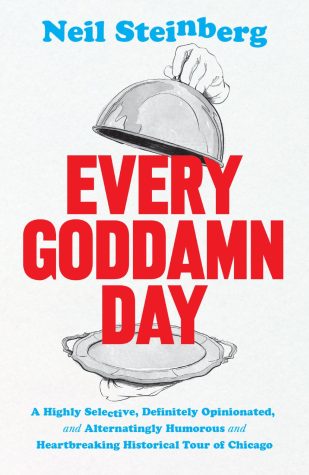Book covers important event in Chicago history for every day of the year
November 2, 2022

From a perpetually-active downtown to diverse neighborhoods bursting with culture to a sprawling lakefront, the city of Chicago, formally established in 1837, has layers upon layers of rich history that many of its inhabitants haven’t fully explored.
In “Every Goddamn Day: A Highly Selective, Definitely Opinionated, and Alternatingly Humorous and Heartbreaking Historical Tour of Chicago,” Chicago Sun-Times columnist and freelance writer Neil Steinberg examines Chicago’s past, finding one story for every day in the year.
Mr. Steinberg has written for the Sun-Times for 35 years and splits his time between the newspaper and his personal blog, which shares its name with his new book.
“I have a blog called ‘Every Goddamn Day,’ where, true to its name, I write something every day for the past nine years,” Mr. Steinberg said. “Three days a week, it’s my newspaper column. Four days a week, it’s something else.”
About two years ago, the University of Chicago Press asked Mr. Steinberg to write a book of history similar to his blog.
“They said, ‘Could you do a book of history, like your blog, where you do essays tied to the day?’” Mr. Steinberg said.
The University of Chicago Press was inspired by Mychael Barratt’s “London Map of Days,” which explores history in a similar day-by-day fashion, and wished to mirror that for Chicago.
Mr. Steinberg wanted a compelling reason to write another book. “Every Goddamn Day” is his ninth book. He has previously written about the city in a memoir, “You Were Never in Chicago,” and thought the format the University of Chicago Press wanted would be challenging.
Another reason he wrote “Every Goddamn Day” is because he believes that understanding history is critical for improving the present and future.
“One thing about history is you have to apply it to our lives now. And given what we’re facing in this country now, this history is very timely,” Mr. Steinberg said. “To understand the grotesque racism that was in Chicago then, and frankly now, is very important.”
He first thought about Chicago’s past and identified key times he wanted to cover.
“What is the history of Chicago about? It’s about race, it’s about labor, it’s about industry, it’s about art,” Mr. Steinberg said. “I divided in my mind, you know, bases I wanted to hit, and then I set about to start to fill the dates.”
He felt compelled to include some days key to Chicago history.
“Certain dates you kind of have to have. October 8, 1871 is the Great Chicago Fire, although I ended up having two dates,” Mr. Steinberg said. “October 8 is the day it started, and October 9 was sort of the day that it really did its damage.”
Due to Mr. Steinberg’s experience as a newspaper columnist, he had specific philosophical approaches to writing about history.
“One way to bore people is to tell people what they already know,” he said, so when he approached stories familiar to the public, he investigated the story and presented it in a new way.
The St. Valentine’s Day Massacre in 1929 was one event he focused on through a different perspective.
“The St. Valentine’s Day Massacre was never really solved, and that bothered people, and they said, ‘We should have a Scotland Yard,’ which is the British governmental detective agency,” Mr. Steinberg said. “So Northwestern University set up the first crime lab, and this was several years before the FBI did, and I didn’t know that, so I focused on the crime lab, which is something unusual for people.”
Mr. Steinberg tried to find stories that were both interesting and from a diverse array of communities. Among other sources, he contacted some cultural museum founders to do this.
“We live in a very racially charged time, and so I didn’t want this to be the white guy’s history of Chicago,” he said. “I made a point of going and looking to different groups and to try to include them.”
History is an ever-changing story dependent on its interpreter, and while uncovering the whole truth of events may not be possible, “Every Goddamn Day” seeks to bring bits of Chicago history out of the dark just as it happened: day by day.



























































